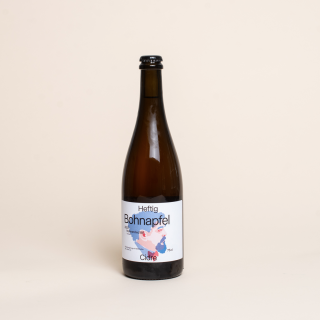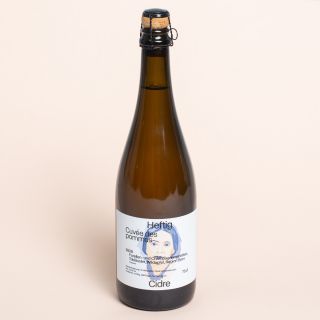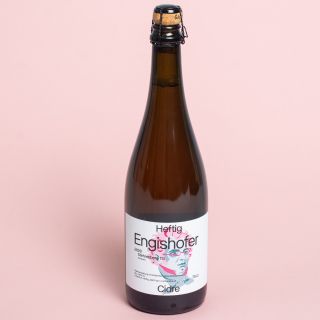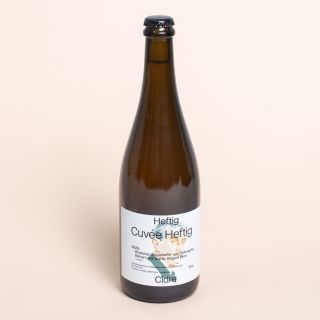A visit to Heftig Cidre
Those of you who live in Bern may have been to the old Lehman butcher's shop on Längasse this summer for the pop-up of Heftig Cidre and Satellites of Love. Lehman's butcher's shop had to close after 70 years due to a lack of skilled workers. Only one of the original 22 businesses remains. We were of course very happy to see new life coming to the old butcher's shop. We were even more pleased when we heard that, in addition to the gastronomic offerings, the cider label Heftig Cidre and the natural wine collective Satellites of Love were moving their productions to the restaurant.
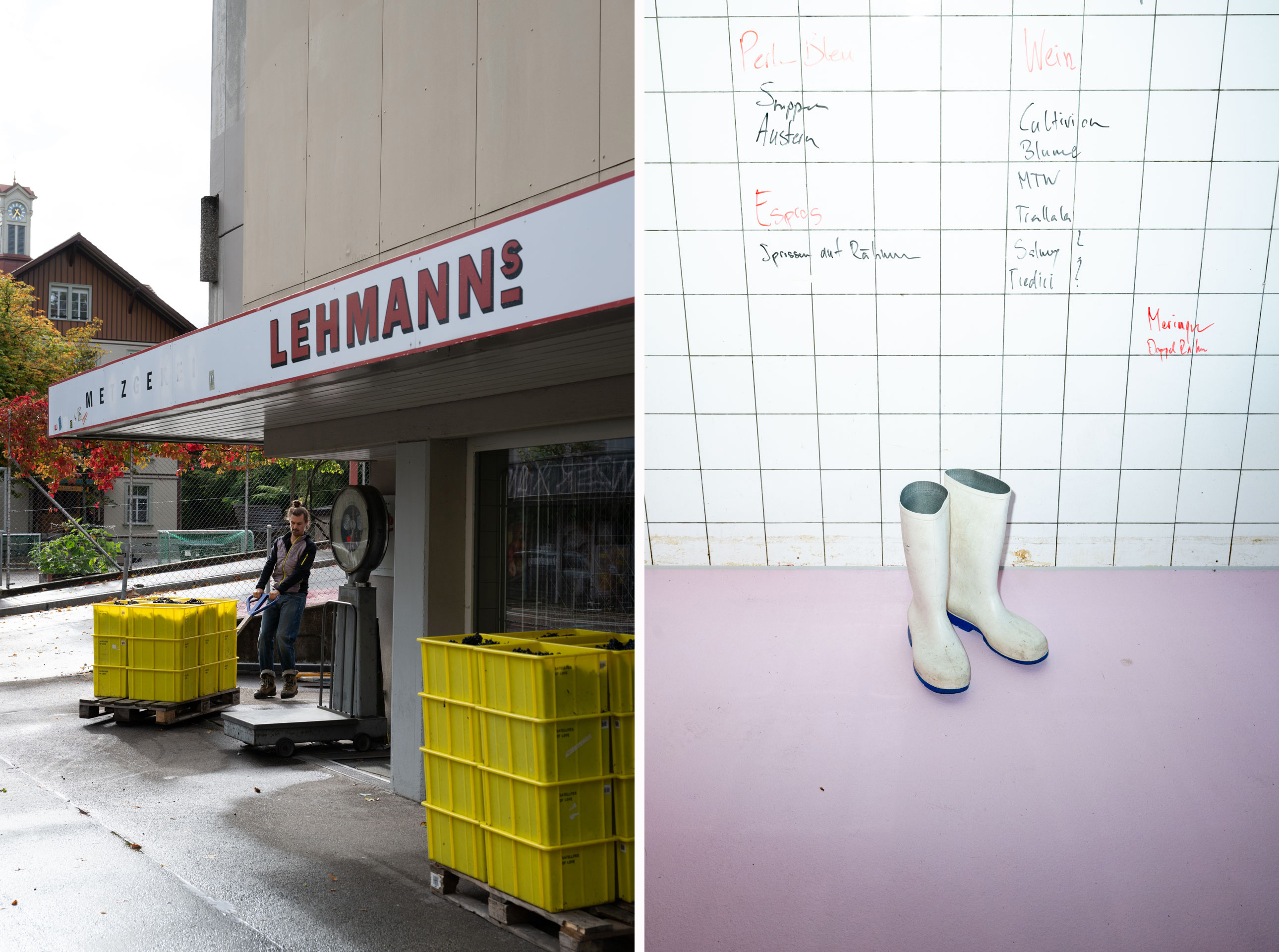
Zur Deutschen Version gehts HIER
We are big fans of cider. Cider is a great alternative to wine. Its complex flavor makes it a wonderful accompaniment to food, and it's lighter than beer. There's no chance of a headache the next day.
We have been selling Heftig Cidre at SUPPER in Kitchener for several years and were happy to finally meet Bruno to learn more about his cider.
A conversation with Bruno Bucher from Heftig Cidre.
First of all, we wanted to know how Bruno came to produce his own cider.
As a trained chef, he has always been interested in wine production and at some point wanted to bring his own wine to market. But, as Bruno tells us, he lacked the connection somewhere. Bern is not a wine-producing region. Through his job, he often has contact with farmers, and during his visits to the farm, he noticed that the apples that fall from the trees are simply left lying there.
When he first tasted the cider from Jacques Perritaz at the Ciderie du Vulcain in Fribourg, he realized that a sophisticated cider could also be produced from Swiss apples. A drink that is full of life, bursting with energy, drinkable and digestible! Shortly afterwards, he started to try it himself. In the beginning, he didn't have to pay for the apples, he could just pick them up.
Today he has a whole network of farmers. They pick the fruit together and sort it. In return, he can pay a fair price for the apples, which is important to him.
The farmers all have a connection to their Hosteten and still cultivate their trees in a professional manner, which can no longer be taken for granted today. Bruno has made it his mission to advise the farmers and motivate them to replant old and rare varieties.
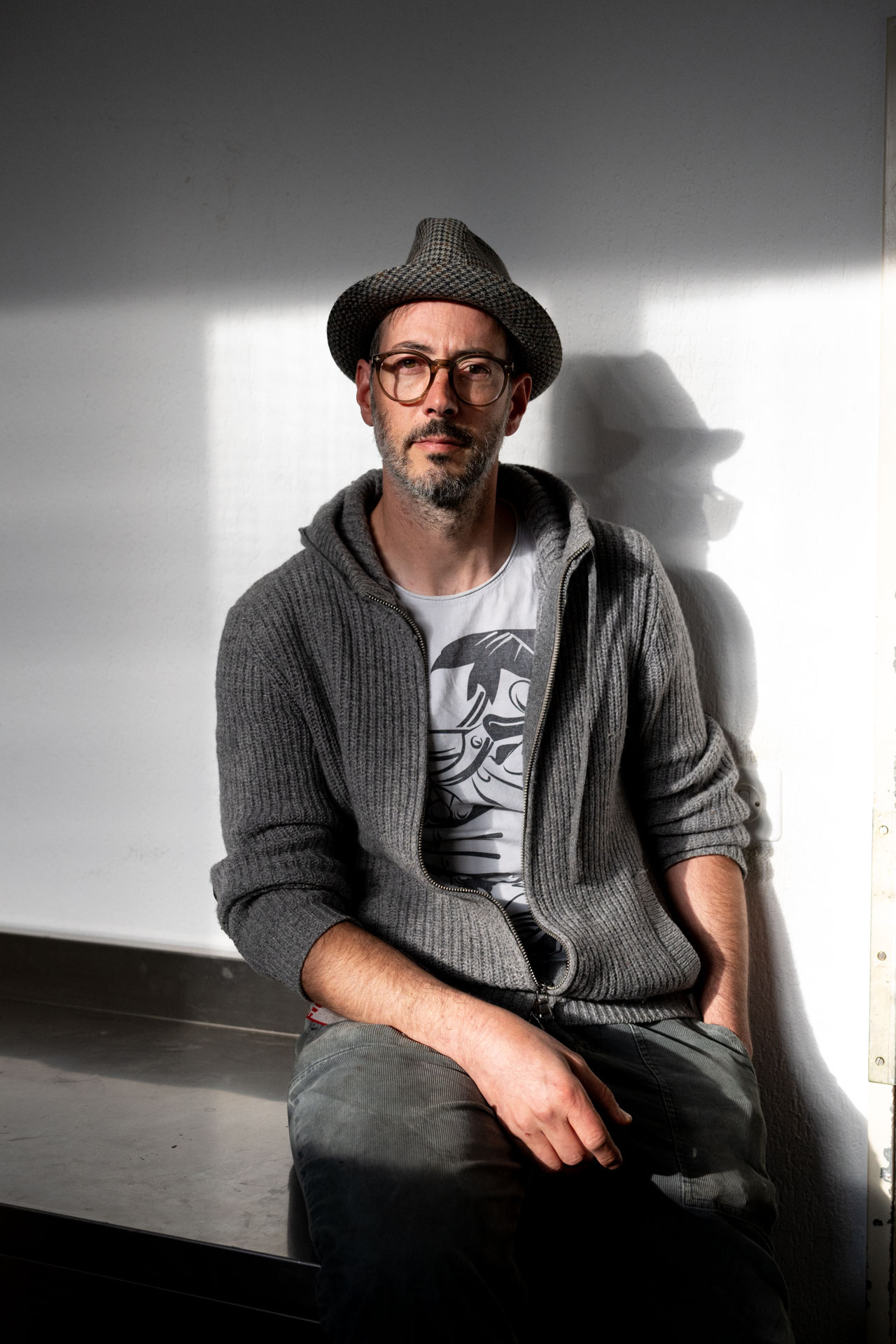
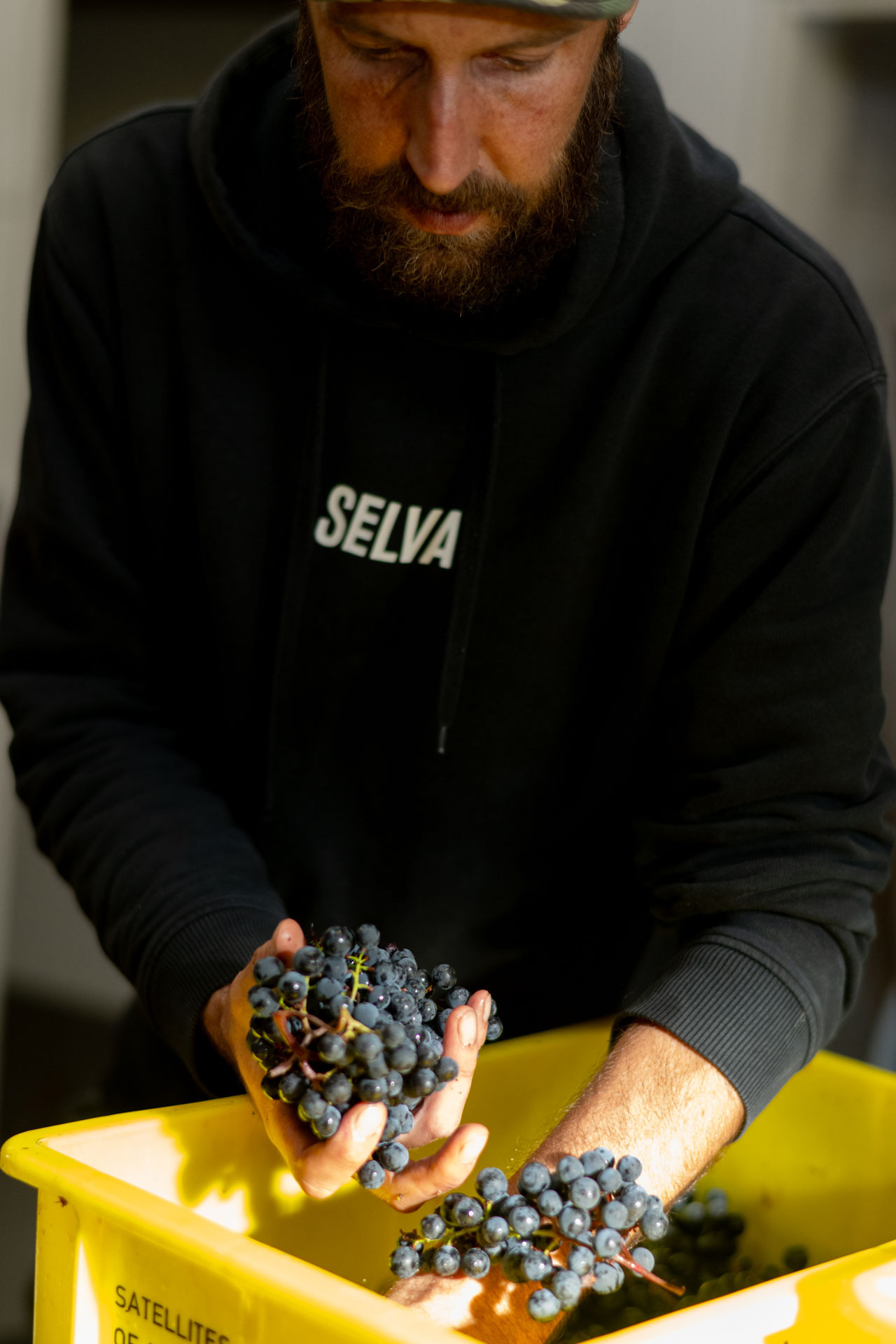
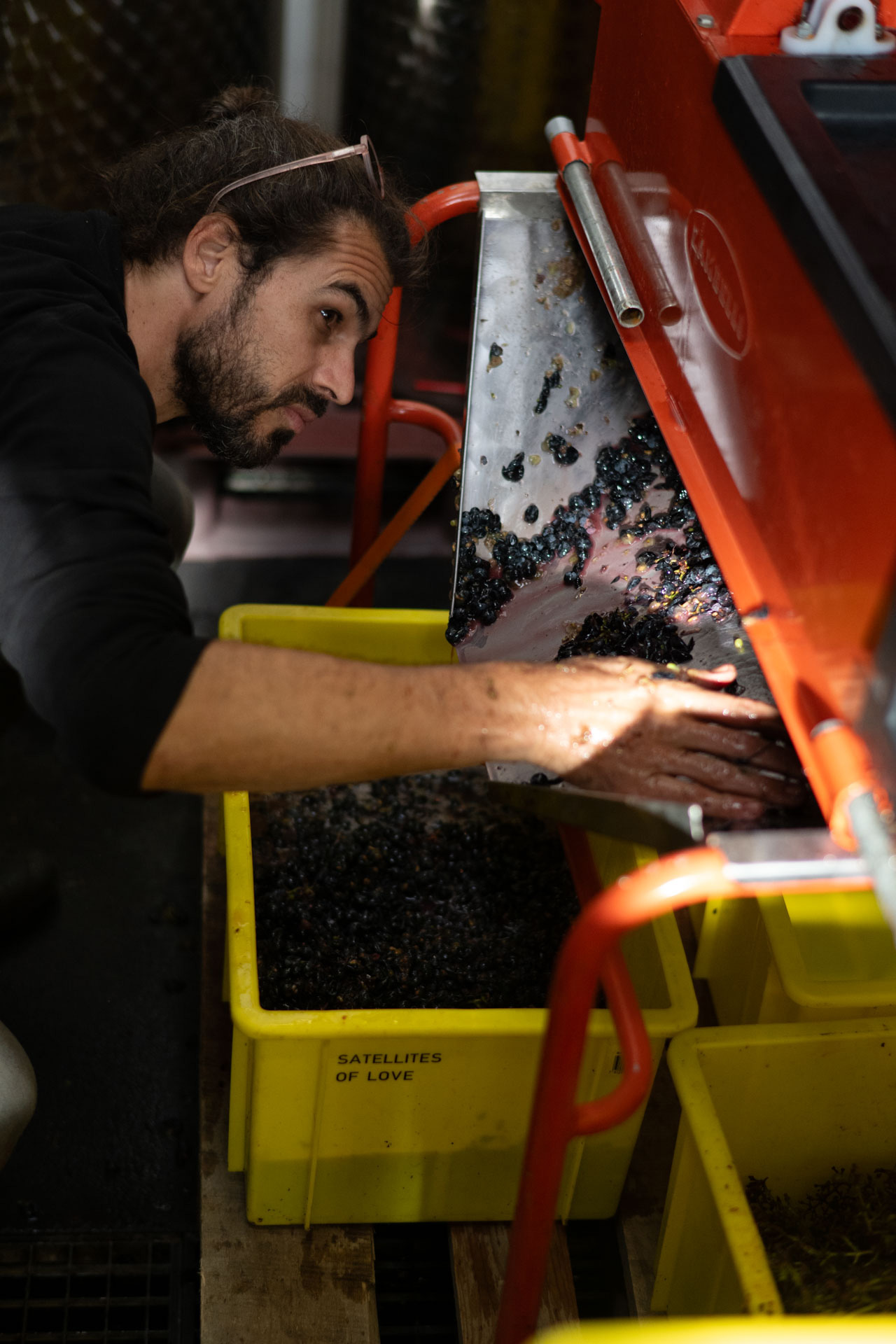
Fortunately, Bruno denies the question of whether there will be fewer and fewer hostels. In eastern Switzerland, especially in Thurgau, there are still large cider presses. There, it is still worthwhile for farmers to invest in the production of apples. Here in the canton of Bern, there used to be many cider presses as well. However, due to overproduction and the risk of fire blight, they were dismantled with state subsidies. So now there are only small cideries left in the canton of Bern. You could also take the apples to the Landi, but they charge money for accepting them. “It's not worth bending down,” says Bruno.
Anyone who is accustomed to Swiss Most or English cider will quickly notice that the French “methode ancestral” is quite different. A Breton or Norman cider is lighter, more complex and drier than our “suure Most”. We naturally ask Bruno why this is.
The main difference, explains Bruno, lies in the apple varieties. In Brittany, a lot of work is done with bitter apples, which do not grow in our region. These varieties bring an aroma and depth that we would not be able to achieve with our apples.
For Bruno, the fruit is the most important thing about cider. His goal is to capture the typical aroma of a variety in his cider and to preserve it in the bottle.
All of his apples come from Hochstamm Hosteten. He explains to us what this means exactly:
The natural form of a fruit tree consists of a tall trunk with many branches branching off from it. Today, however, farmers prefer to grow trees with rather low trunks. These are easier to manage because work such as harvesting, pruning and spraying can be done directly from the tractor. Low-stem fruit trees are not very long-lasting and stop producing fruit after a few years. Then they have to be uprooted and new ones planted. In contrast, standard fruit trees can live for several hundred years and still bear fruit every year.
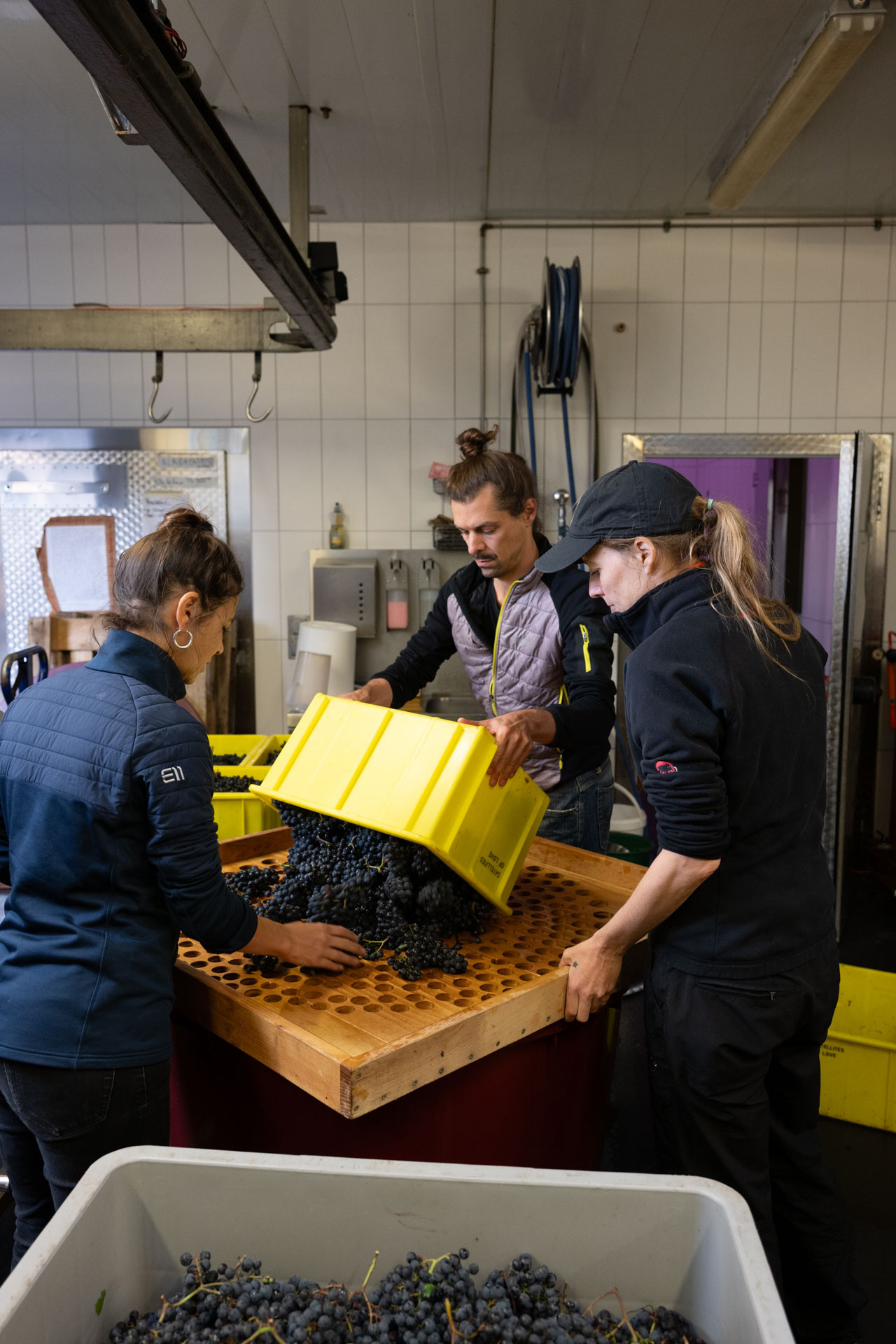
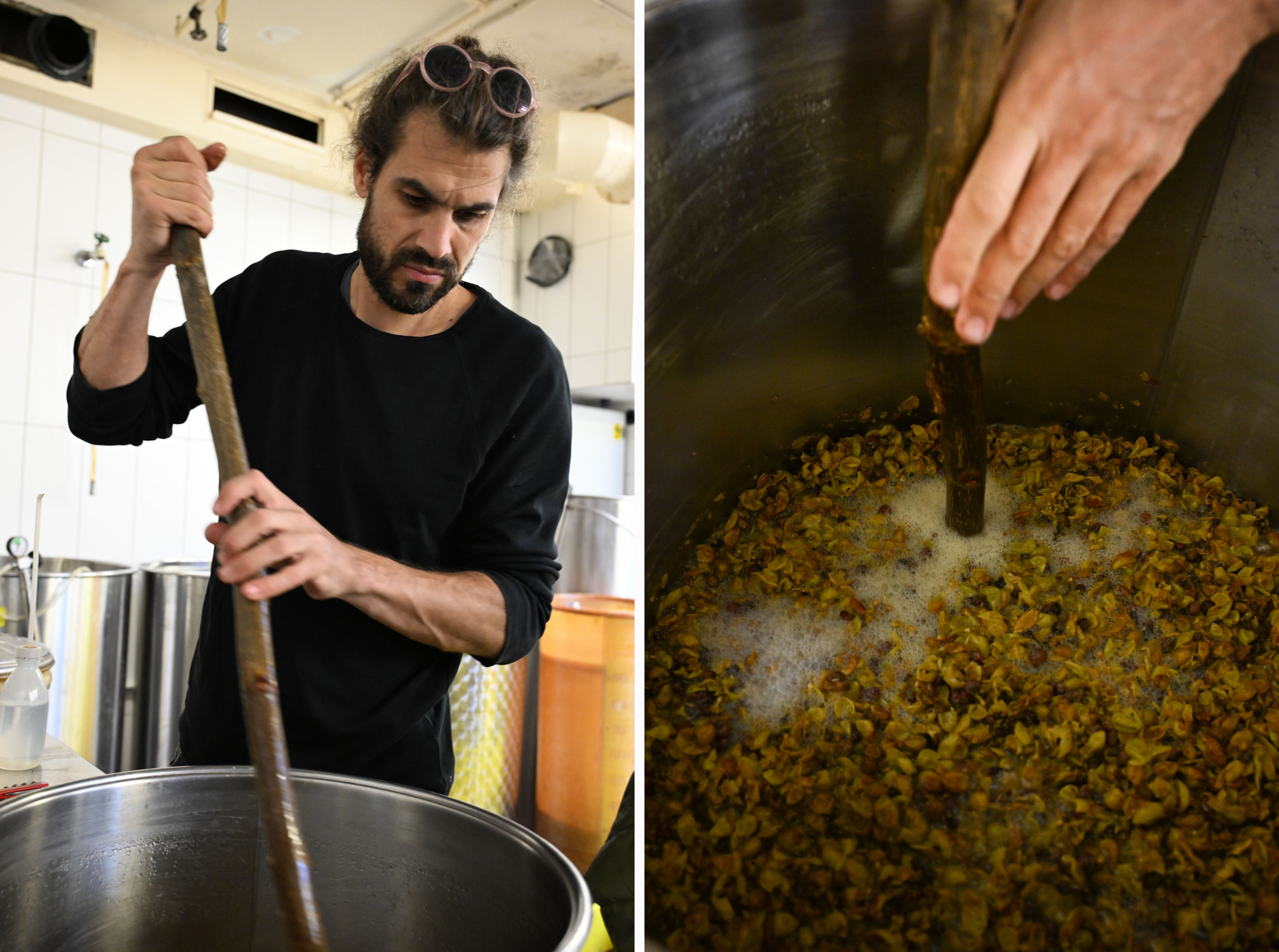
They also differ in acid and sugar content. The dessert fruit from low-stemmed trees is not suitable for cider production. The main focus is on color, shape and shelf life. The use of fertilizers means that the apples have too many nutrients, which makes them ferment too quickly for cider production.
That's why Bruno uses fruit from tall trees. These are small and low in nitrogen and have comparatively few yeast nutrients. Exactly what you want for cider production.
New: Namely, the slowest possible fermentation, which, when the weather gets cold, stops by itself, even though some residual sweetness is still present. At this point, the cider is bottled and then left to rest until spring. When the weather warms up again, the yeast begins to metabolize the residual sugar. During this residual fermentation, which takes place in the bottle, carbon dioxide is produced, among other things.
At the beginning of June, Bruno organizes a public presentation of the vintage, where each cider is opened and tasted. Based on this tasting, a decision is made as to which ciders are ready for sale and which ones need to ferment further. Some ciders are kept for up to a year.
The more tannins and bitter substances the apples or pears contain, the longer the cider will keep. In Brittany, the fruit is extremely bitter and inedible. During our interview, Bruno gives us a ripe water pear to try. We quickly realize that it is much too bitter and almost impossible to swallow. It is very aromatic, but somehow it “resinifies” in the throat. Bruno often uses lemon pears for his cider. He only knows of one single tree of this variety. Such cider fruit is much coarser and therefore easier to press.
Bruno produces an average of ten different types of cider, sometimes more. There is always something new to try out. It also happens regularly that he discovers new types of fruit or interesting trees that he wants to test.
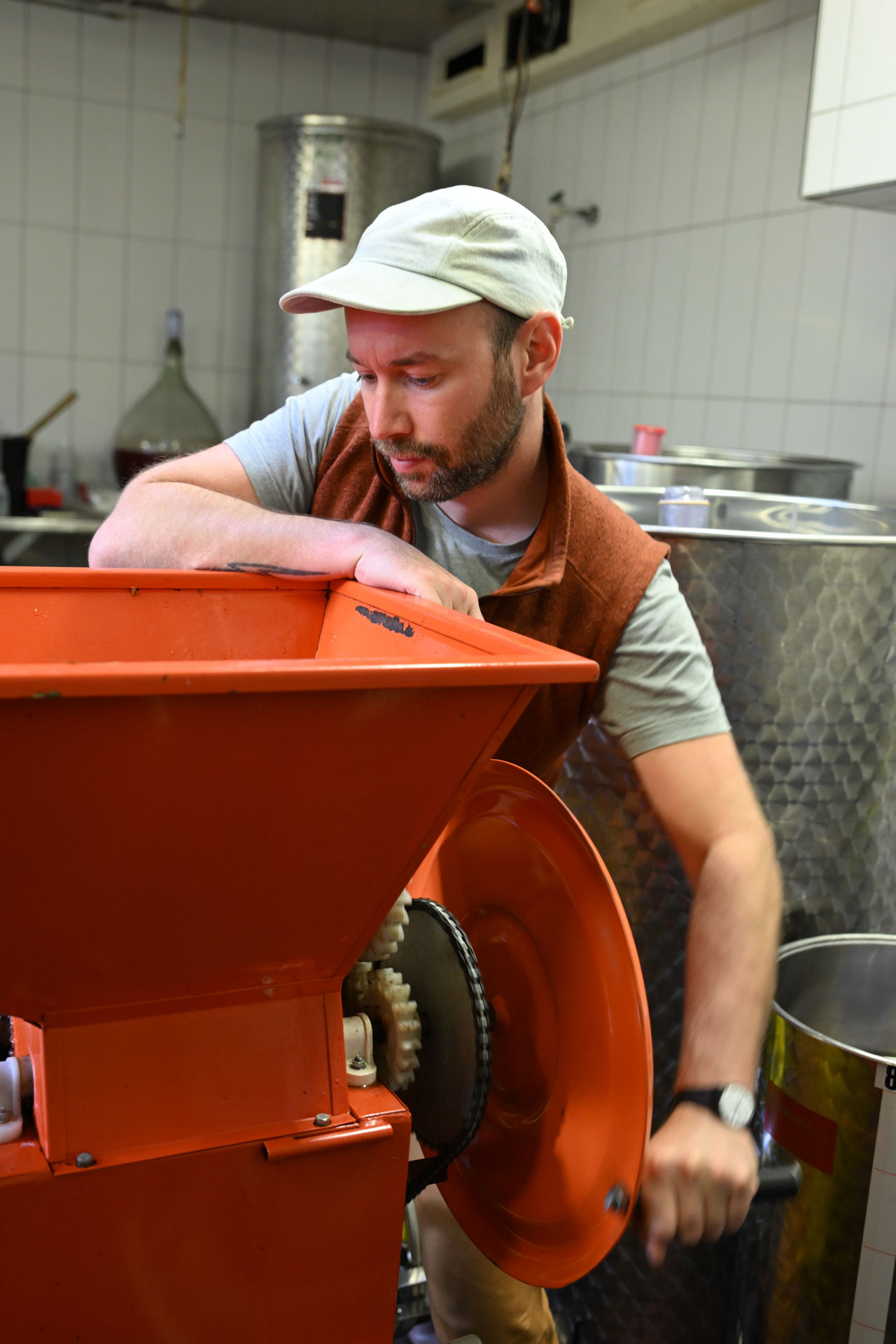
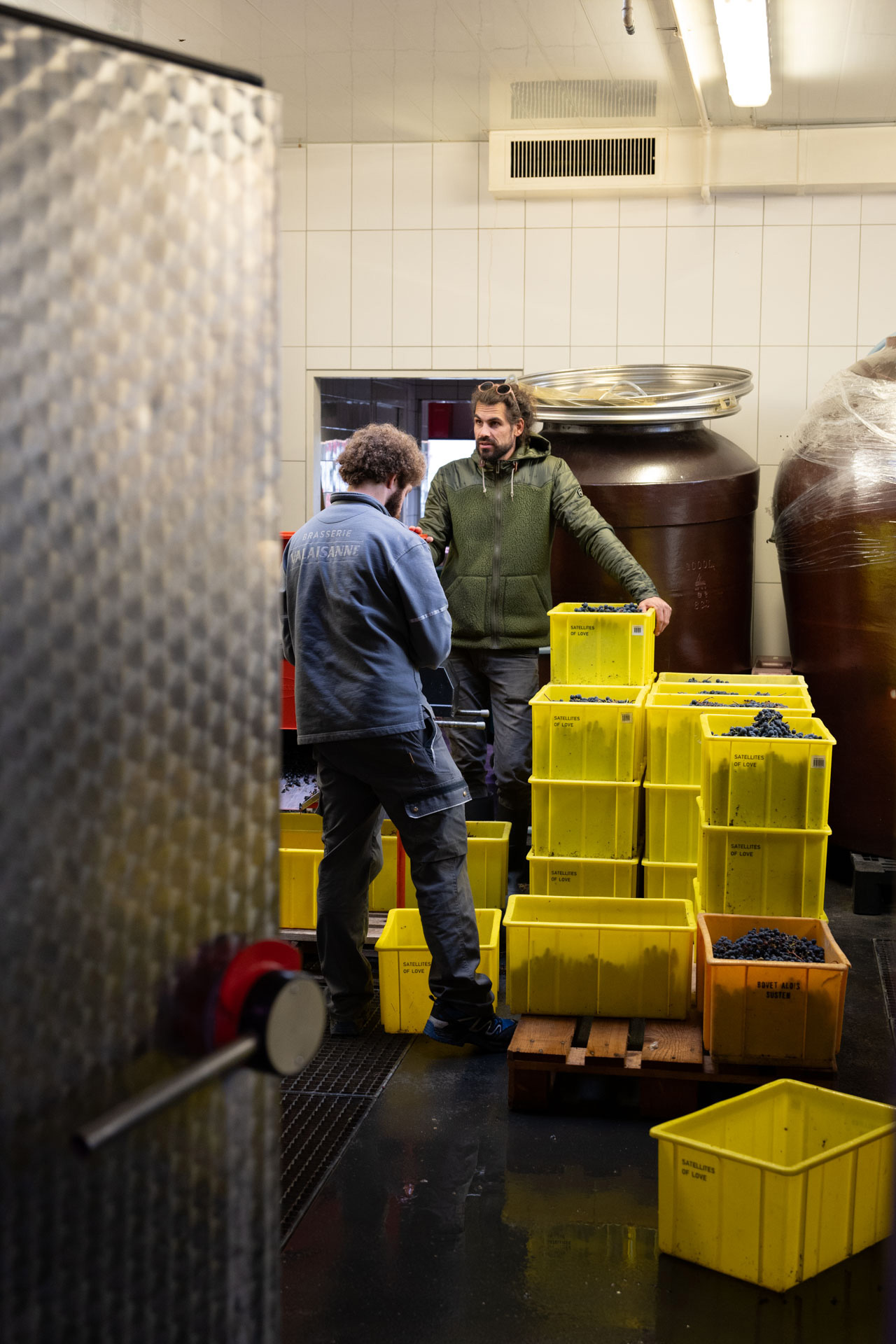
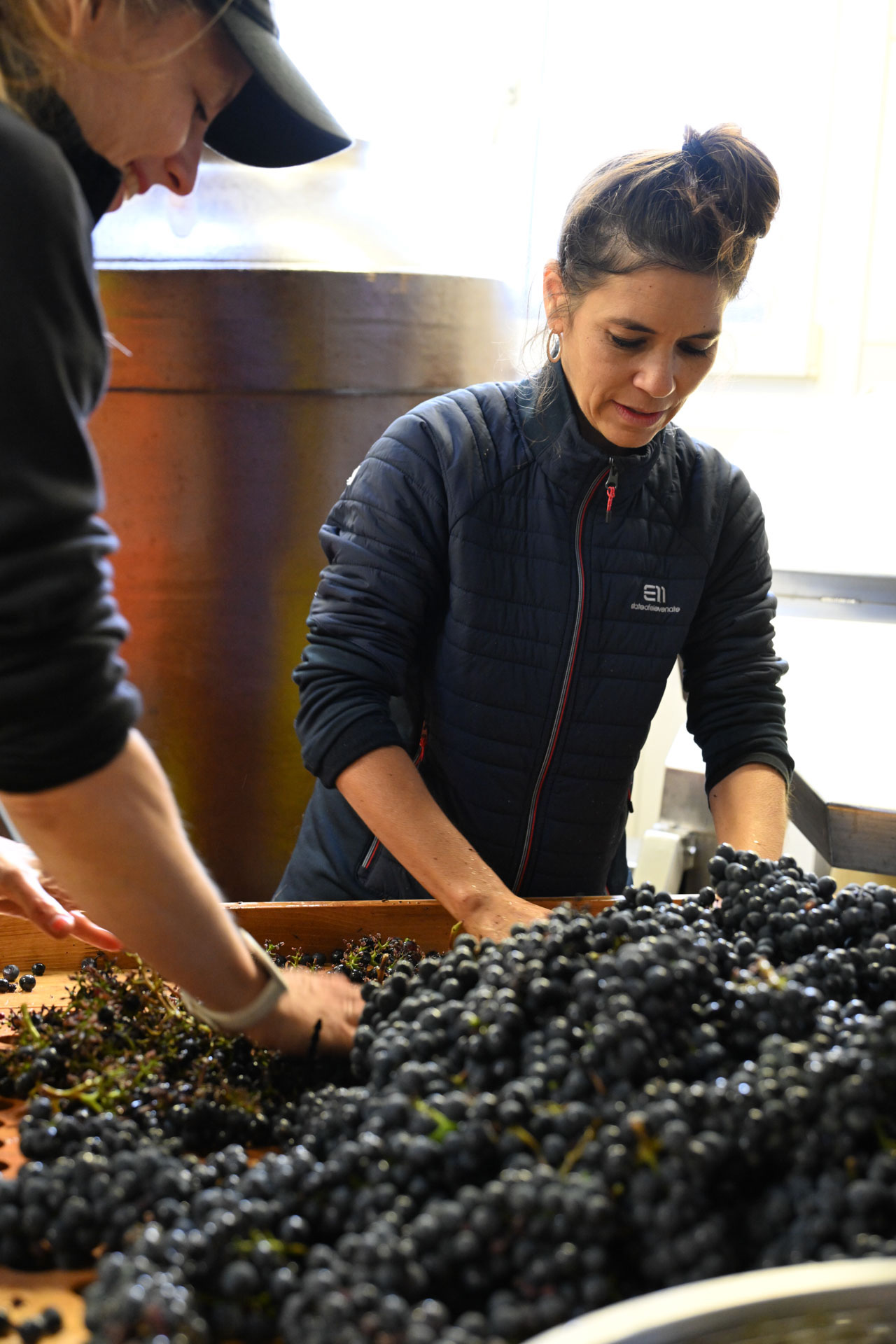
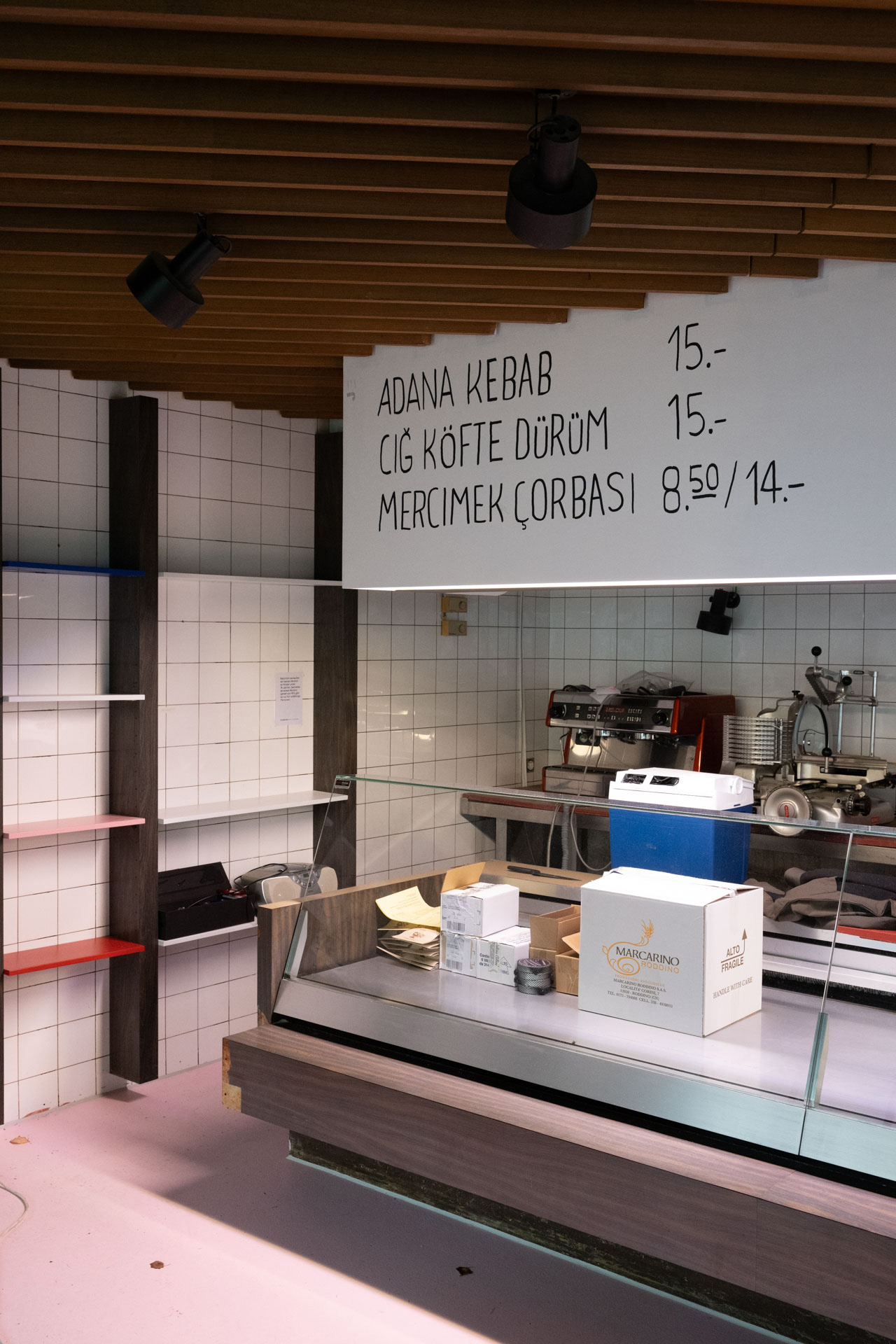
Finally, we are curious to know what is happening in the old Lehmann butcher's shop.
Both cider and wine production take a long time. There is always something to check, which is easier to do collectively. You can support each other, and during the long night shifts after the harvest, it's also nice not to be alone in the cellar, Bruno tells us. This is supposed to be Lehmann's, with wine and cider production in the back and a window on the city in the front. A place to linger, both for the producers and for guests.
Since they don't yet have a catering license, the collective is currently running a shop with food from the region and, of course, their ciders and natural wines. The few tables are perfect for enjoying an aperitif and, if you're lucky, you can watch the action in the cellar. A wine bar is planned to open next year.
Pictures by Raffael Waldner

